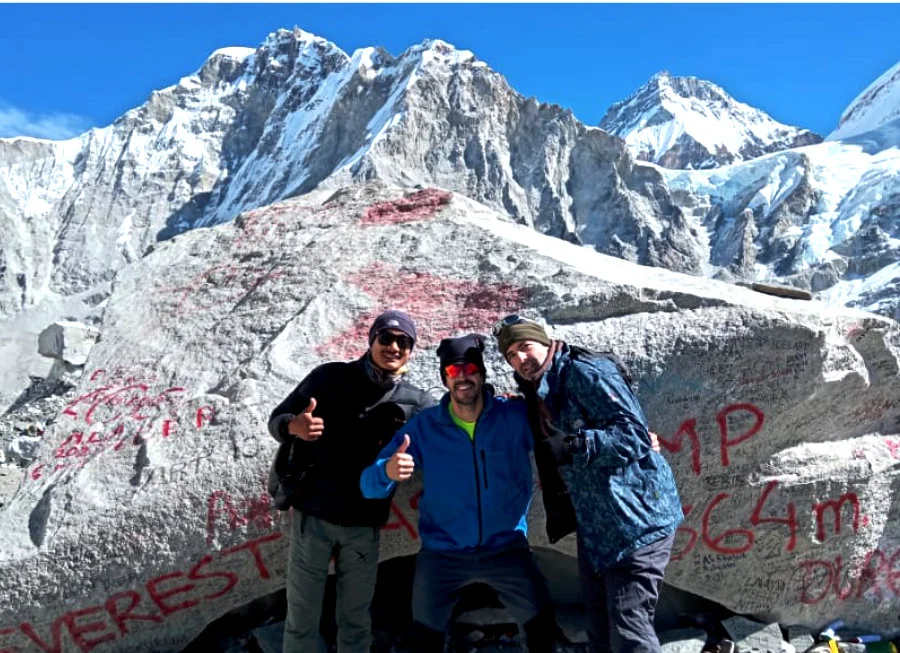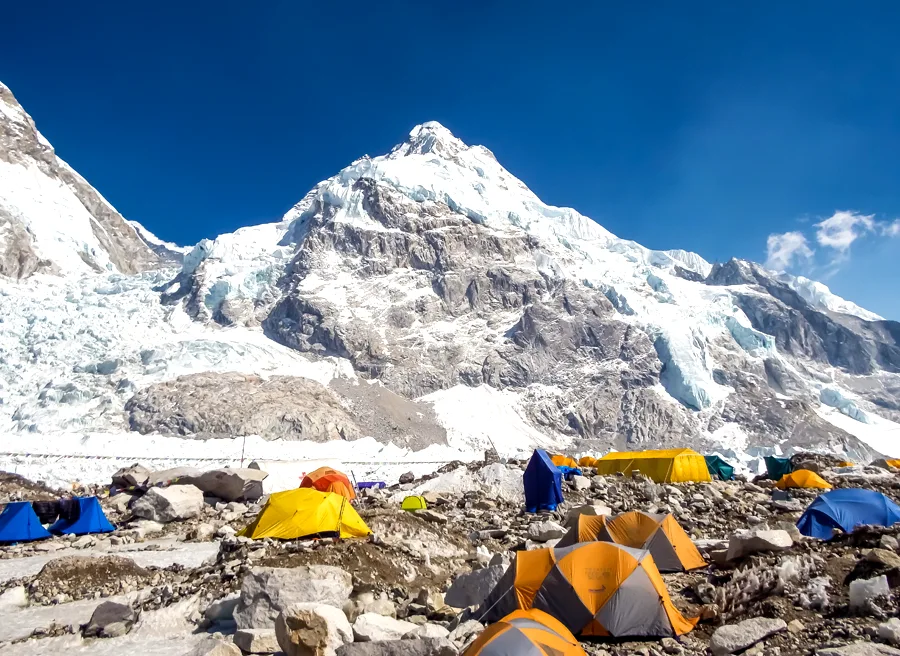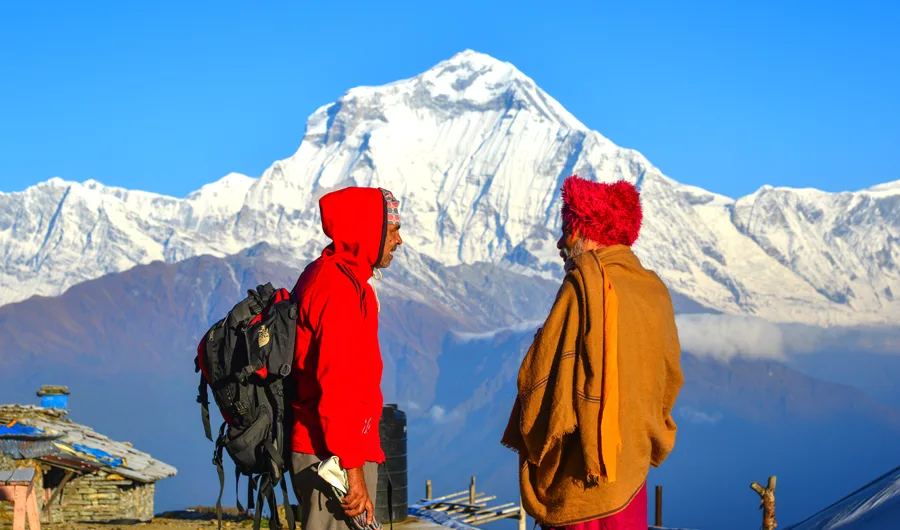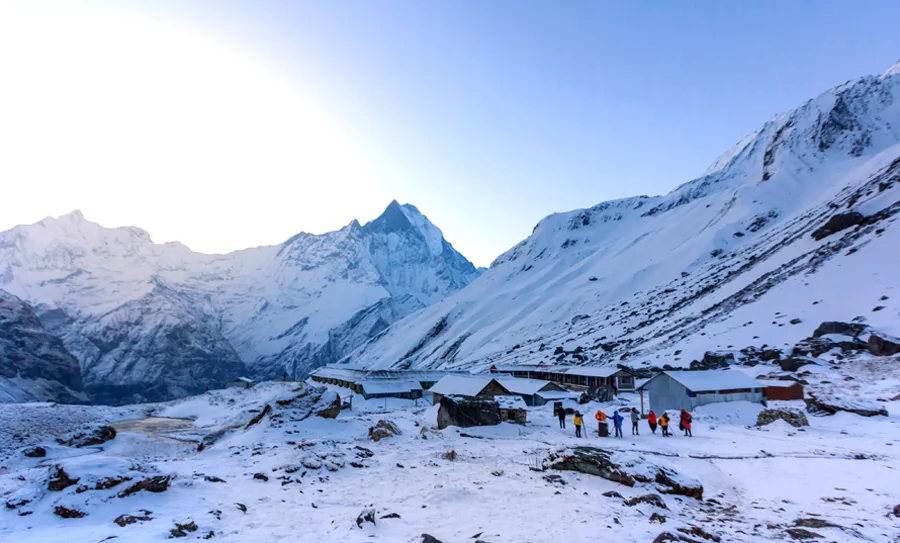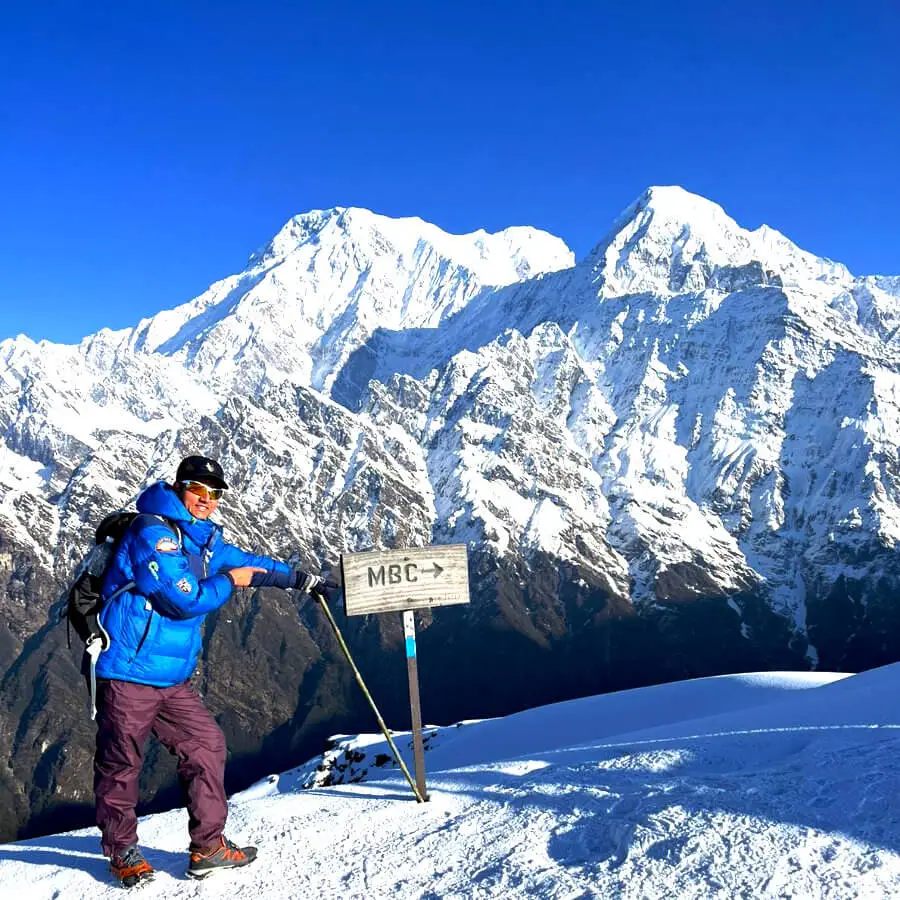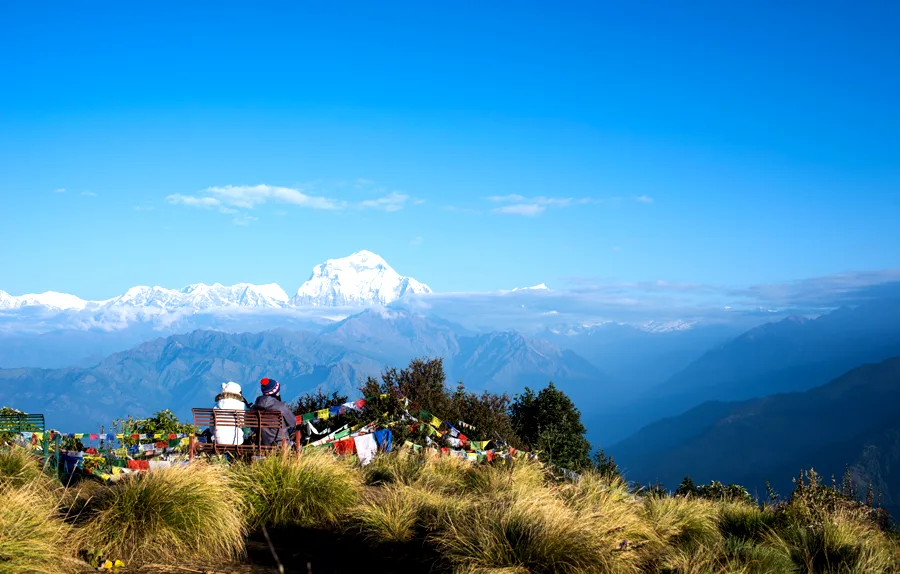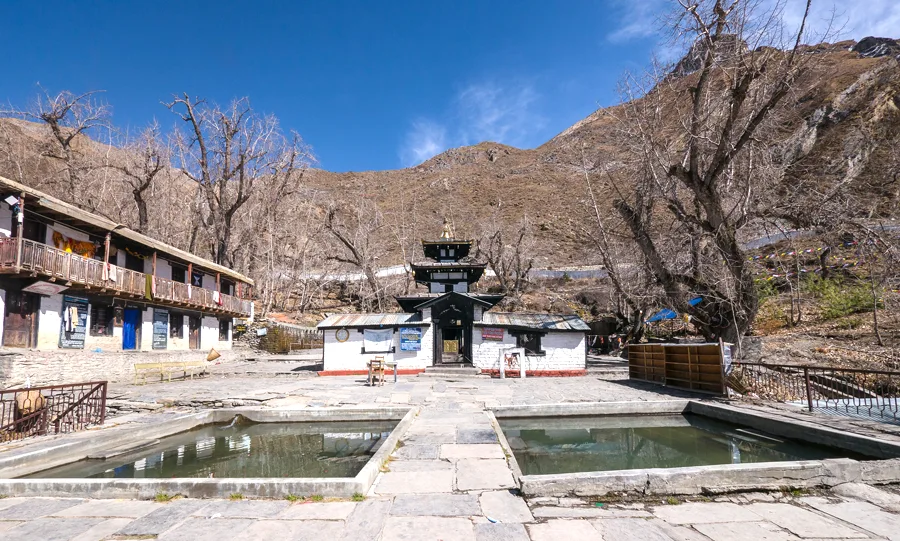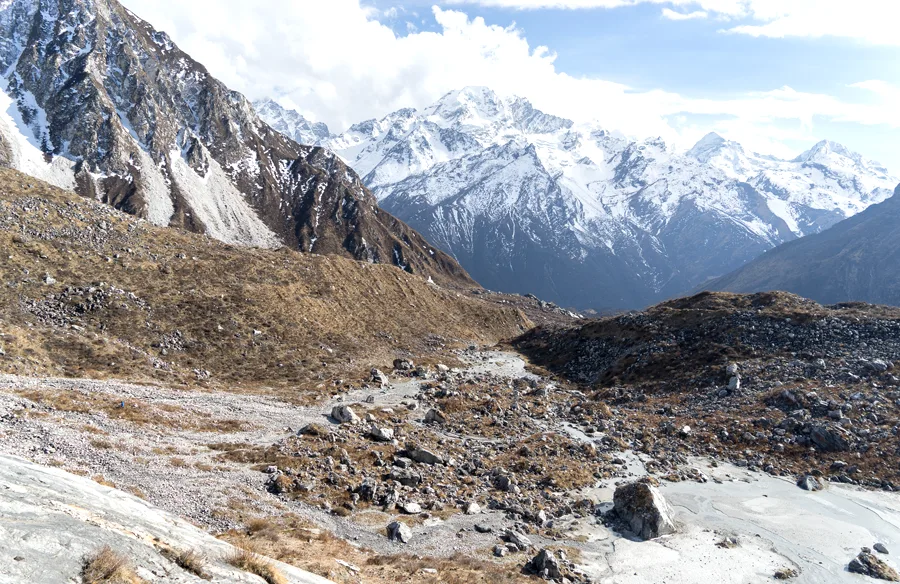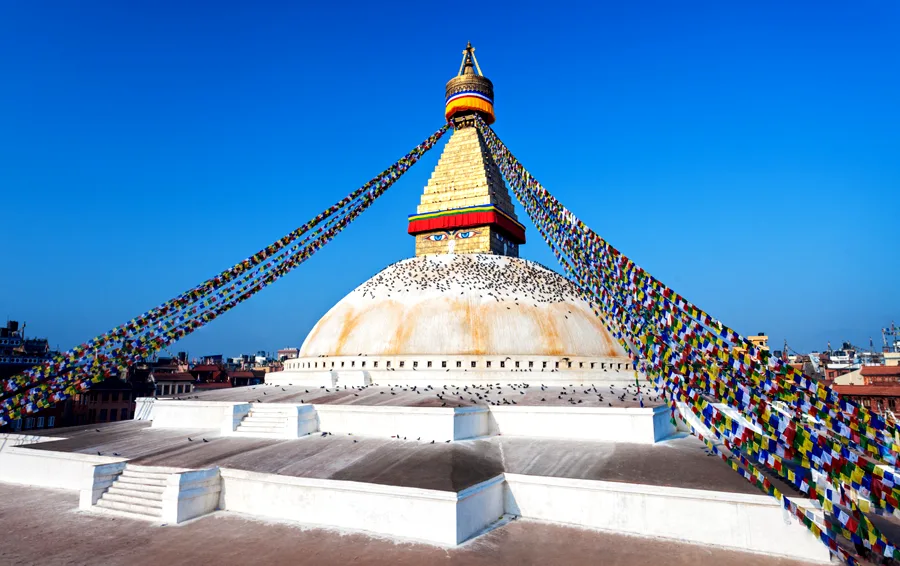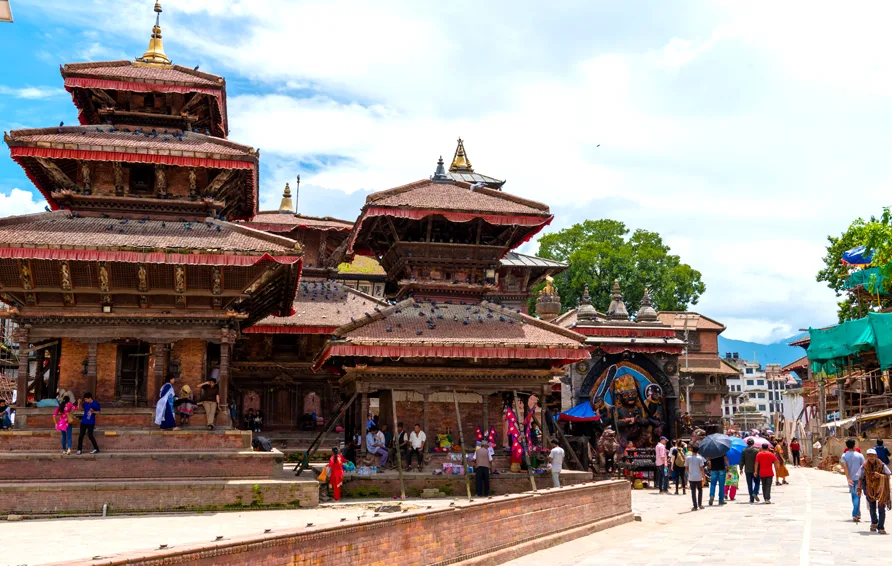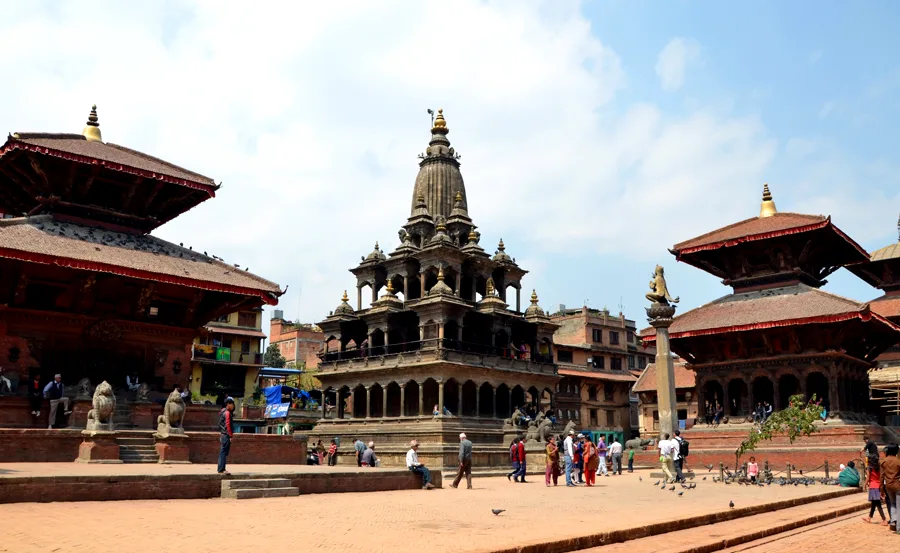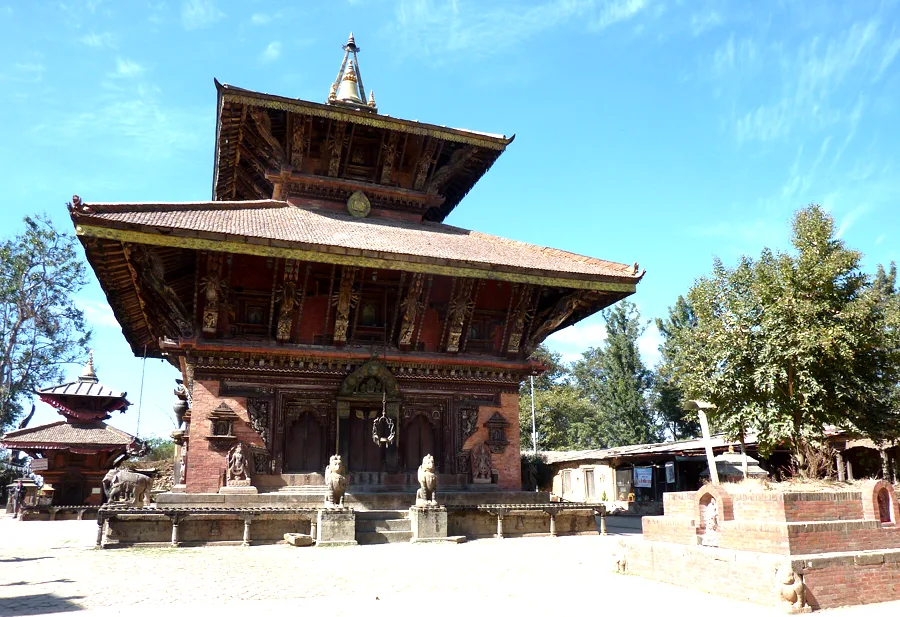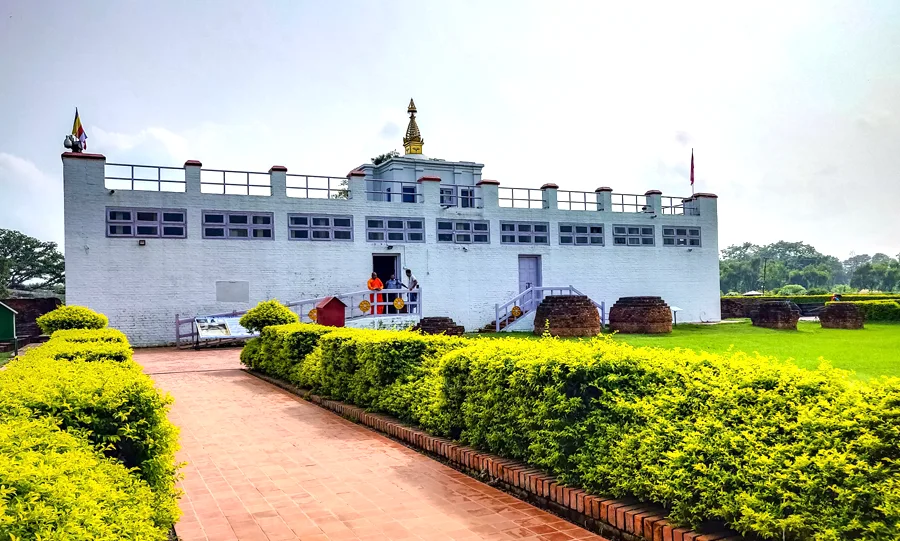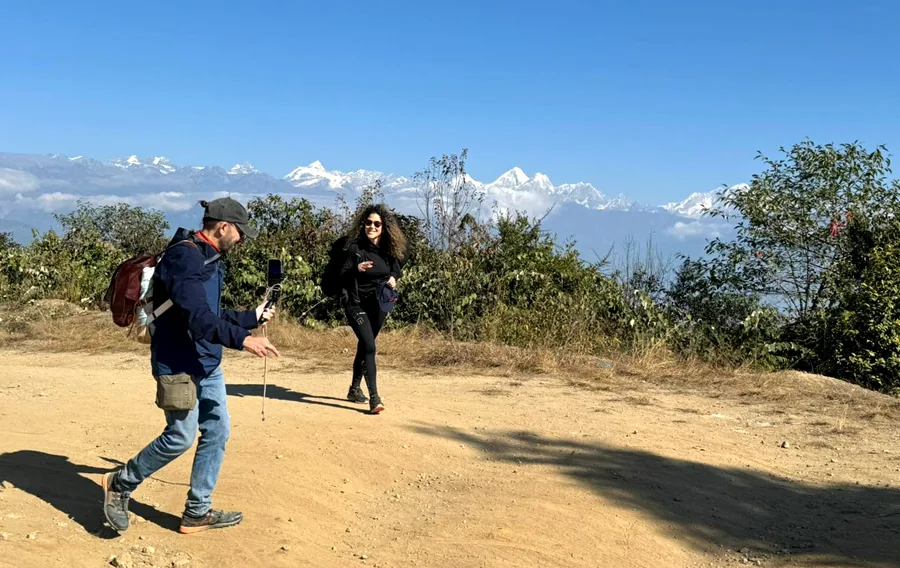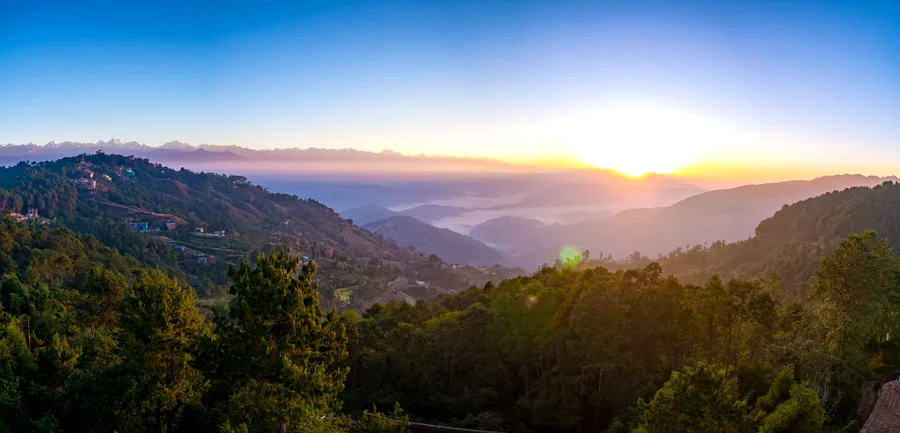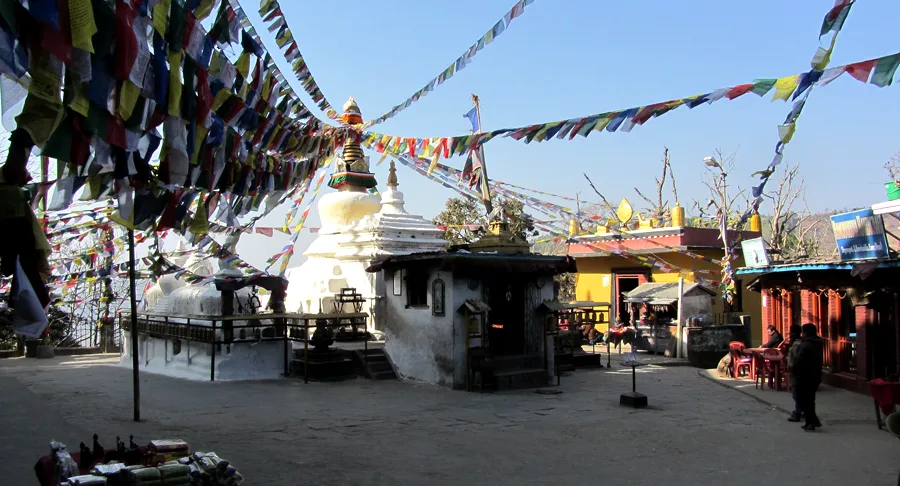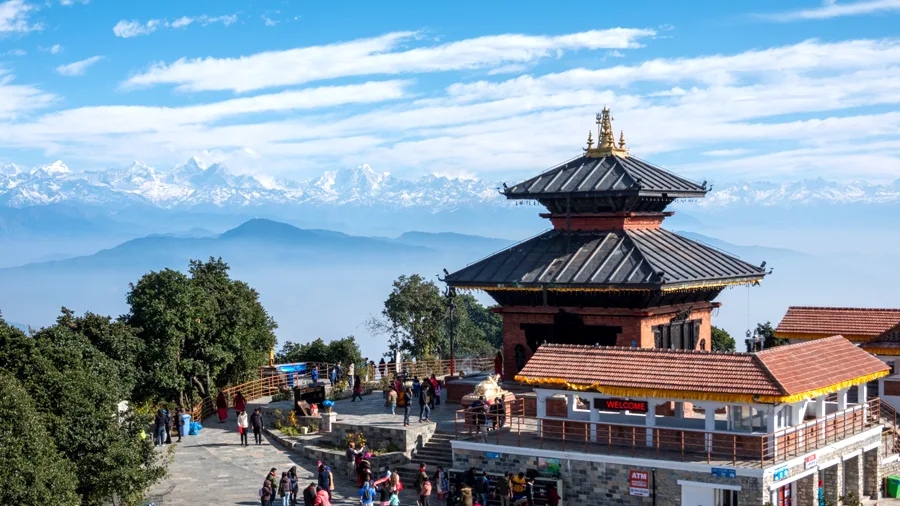Imagine you are at a place where the old Himalayan secrets mix with the lively streets of Kathmandu. Traditional Vegetarian foods in Kathmandu, Nepal, are like a tasty tour guide, taking you on a yummy adventure. It’s like enjoying the delicious vegetarian foods in Kathmandu, where every dish is unique and special.
Nepal is famous for its amazing scenery and delicious food. You can try some of the best vegetarian Nepali food cooked by families for years. Each dish is like a story, telling you about the country’s culture and history and the friendly way to welcome our vegetarian guests.
Imagine you are enjoying the flavors of delicious momo pakoras at small street stalls and the most famous dish – dal bhaat paired with vegetables, salad, and pickles. Willing to taste the savory vegetarian foods in Kathmandu? Can’t wait to see the various textures, tastes, and smells that make these dishes amazing?
Let’s dive into our main concern: the local Vegetarian Foods in Kathmandu, Nepal, and the famous place to try these foods!
List of 12 Famous Vegetarian Foods in Kathmandu, Nepal: Enjoy The Flavors of Nepali Cuisine
People often think that Nepal is all about Dal Bhat, but that’s not the whole picture. While Dal Bhat is the norm, it doesn’t reflect anything about the cuisine here.
Veganism may not be part of Nepali culture, but it is gaining popularity. Today, many Nepalis enjoy this healthy lifestyle.
Let’s explore the top 12 local vegetarian foods in Kathmandu, Nepal that will make your taste buds happy. Get ready to try the awesome flavors of Nepal, in this amazing place.
1. Vegetable Momos: special vegetable-stuffed dish
People enjoy eating vegetable momos in Nepal. It’s like a meal with lots of vegetables and tasty spices, and they often pair it with spicy sauce for extra flavor. You are going to enjoy the special vegetable-stuffed momos!
These delicious momos are a must-try dish when you come to visit Nepal. Steamed or fried, they are wrapped in soft dough, bursting with the flavor of seasoned vegetables. Be sure to ask a local for their authentic vegetable momos recipe. Don’t miss your chance to enjoy this pocket-sized delight during your Nepal adventure!
Some common types of vegetarian momos are cheese momo, steamed momo, fried momo, jhol momo, chili momo, sadheko momo, etc. If you’re a first-time visitor and want to try momos, you can check out places like
| Restaurants | Location |
| Yangling Tibetan Restaurant | Thamel, Kathmandu |
| Ghangri Café | Jhamsikhel, Lalitpur |
| Momo Magic | Maharajgunj, Kathmandu |
2. Dal Bhat: Local Favorite Food

Dal bhat is said to be the most common and important dish in Kathmandu, Nepal? Nepalis eat dal bhat twice a day, for lunch and dinner. Dal Bhat is like the power to give our body more energy for a long time.
Dal bhat is the ultimate powerhouse with lots of carbohydrates and is a favorite meal of travelers and a local daily staple for locals When travelers eat dal bhat while traveling, it helps them to walk longer without going hungry.
Dalbhat offers a variety of dishes like rice, lentils, achar (coconut), and tarkari (vegetables). Locals and travelers alike enjoy this local cuisine. You can ask locals about their favorite places – they will tell you where to eat dal bhaat in Nepal.
Dal bhat is a special dish that you can find in every big and small restaurant in Nepal. You can have it every day, and each time, it can taste a little different because the ingredients change depending on the place and culture.
| Restaurant | Location |
| Bhojan Griha | Dillibazar, Kathmandu |
| Thak Khola Cuisine | Jhamsikhel, Lalitpur |
| Tukuche Thakali Kitchen | Durbar Marg, Kathmandu |
3. Sell Roti: Sweet Rice Donut
For breakfast, vegetarians can enjoy a tasty snack called sel roti paired with achar. While you can eat it any time of the day, many people like having it in the morning with tea. Sel roti is like a round, soft donut made from rice flour, and try it with a bit of spicy potato pickle that balances the sweetness of sel roti.
You can easily find sel roti and achar in hotels and restaurants that open early for breakfast. Look around Basantapur for places serving hot and fresh sel roti and achar. Sel roti is a round, crispy, and slightly sweet rice donut that is a common dish in Nepalese homes and tea houses.
It just doesn’t taste good; It’s good for you too because it’s gluten-free and easy on your stomach. Locals often have sel roti with a hot cup of Nepali tea, making it ideal for a quick and satisfying breakfast. Be sure to try this delicious twist on donuts while on your Nepal trip.
| Restaurant | Location |
| Banglamukhi Delight | Patan, Lalitpur, Kathmandu |
| Lokpriya Sel Roti Bhandar | Samakhusi, Kathmandu |
| Bakeries Store | Guna Kamadev Marg, Kathmandu |
4. Bara: Delicious Lentil Pancakes
Treat your taste buds to Bara, a special food from Nepal that’s more than just a dish – it’s like a piece of Nepal’s history on your plate. These crispy lentil pancakes have been loved in Nepali homes for a long time, carrying the yummy traditions of the country.
To make Bara, you mix ground lentils with spices and a touch of magic, then fry them until they turn golden. Each bite tells a story about Nepal’s tasty traditions, and you can enjoy it one delicious piece at a time.
People in Nepal really like Bara. This is a very famous vegetarian dish in Nepal. What makes it more special and unique is its crisp texture and flavor. To make bara, first, soak the black lentils in water overnight, blend with spices like ginger, onion, garlic, chilies, cumin, and coriander, and let it rest for a few hours to soften the mixture.
Then, you put the mixture in the warm pan with oil and cook it until it gets crispy. Bara is one of the most favorite vegetarian foods in Kathmandu, Nepal, especially during festivals or unique events.
| Restaurant | Location |
| Harati Newari Restaurant | Nayabazar, Kathmandu |
| Nandini Food Court | Patan, Lalitpur |
5. Samosas: Popular Vegetarian Snack
Samosas are a very popular vegetarian snack in Nepal. They are first wrapped in a soft dough, bursting with the flavor of seasoned vegetables. Then they are fried in oil until it gets brown and crisp.
You can get them from nearby shops, street corners, and even restaurants in Kathmandu. Many people in Nepal enjoy samosas with a facet of chutney that adds a spicy flavor.
These snacks are perfect for a quick bite, loved with the help of locals and transport alike. So if you are in Kathmandu, Nepal, don’t miss the chance to try these delightful samosas!
| Restaurant | Location |
| Tip Top | New Road, Kathmandu |
6. Gundruk Pickle: Mixture of Herbal Leaves
Gundruk pickles are a popular sweet side dish in Nepal. It is made from a mixture of herbal leaves such as ground gundruk, radish leaves, mustard leaves, and cauliflower leaves. These vegetables are left to ferment for several days until they lose their sour and tart flavor.
To make powdered gundruk, the powder is first purified to remove excess water. Then, you mix more spices like chopped onion, garlic, ginger, coriander, cumin, turmeric, chili powder and salt.
Then, you let the mixture soak for a long time, sometimes overnight. This makes the pickles super delicious. Try the Gundruk pickles with rice, dal, and curry, or simply have them as a meal.
| Restaurant | Location |
| Patan Museum Café | Patan, Kathmandu |
7. Dhido: Traditional Healthy Vegan Dish
In Nepal, there’s a healthy and tasty veggie dish called Dhindo, and even vegans can enjoy it! If you want to cut down on carbs, you can choose Dhido instead of Dal Bhat. People in Nepal sometimes eat Dhido to help with weight loss.
Dhido goes well with veggies and pickles, and trying it with gundruk ko achar is a great idea – it makes the taste even better. For the best Dhido experience, it’s recommended to eat it at restaurants that specialize in traditional foods. You can find plenty of these places in the Thamel area.
And guess what? Even when you’re trekking to high places, you can still get Dhido. Many hotels and restaurants in trekking destinations include Dhido on their menu. So, even at high altitudes, you have a chance to give Dhido a try!
| Restaurant | Location |
| Jimbu Thakali | Jhamsikhel, Kathmandu |
| Tukuche Thakali Kitchen | Gairidhara, Kathmandu |
| Paleti Bhancha Ghar | J.P. Road, Thamel, Kathmandu |
8. Roti Tarkari: Healthy Vegetarian Meal
Another healthy vegetarian meal in Kathmandu, Nepal that people usually have for lunch or dinner is roti tarkari. Roti is a thin flat bread made from wheat flour. It tastes good, especially with veggies and some yogurt.
Some people mix bread with naan, but the taste and consistency are different. The bread is full of minerals as it is made with wheat flour.
You can choose any vegetarian dish from their menu and enjoy it whenever you want. And the best part is, it’s a great option for vegans too!
9. Yomari: Traditional Newari Dish
Yomari is a traditional Newari dish, usually prepared during ‘Yomari Punhi’ in December or January. People believe that it keeps the body warm in winter.
It is made from rice flour and filled with a sweetener called chaku. The Yomari has a cool and unique shade that makes it look appealing.
If you’re a vegetarian or vegan who loves sweets, you’ll love trying Yomari because it’s delicious. Besides a knife, khuwa is sometimes used as a receptacle.
Yomari can be found mainly in Newari restaurants, especially around Basantapur and Thamel. For an extra kick, you can get it with a slice of potato for something spicy.
10. Jeri Swari: Sweet Dish for Breakfast and Snacks
If you like sweet foods, you will enjoy Jeri Swari. It is a unique dessert, unlike the usual. People in Kathmandu usually eat jeri swari for breakfast. Jerry has a unique shape, like a beautiful round shape, swari like regular bread but white.
Trekkers can also opt for jerryswari to include breakfast with tea as it makes you feel fuller for longer. You can easily find this delicious vegetarian food in any sweet shops and restaurants of any region in Kathmandu, Bhaktapur, and Lalitpur.
11. Samaya Baji: Newari Healthy Cuisine
Even though Newari food often has lots of non-vegetarian options, you can still enjoy it with only vegetarian items. It’s called Samaya Baji.
In the vegetarian version of Samaya Baji, you get things like Baji (Beaten rice), Bara or Wo, Achhar (pickle), soybeans, spinach, Aalu Tama, and an optional side drink called Chhyang.
Newari cuisine is part of the Newari culture, made during special occasions and festivals of the Newar community. The unique ingredients and cooking methods have been passed down through generations.
Many people from the Newar community have opened restaurants to serve authentic Newari food, and you can find them in Kathmandu, Bhaktapur, and Lalitpur. Some of these restaurants include New Lahana, Sasa Restaurant, Lohsha Ghasha, Harati Newari Restaurant, and more.
12. Laphing: Spicy Tibetan Vegan Dish
If you like spicy food, you will love Smiles! Laphing is a popular Tibetan dish because it has a unique taste.
It’s like thick, soft, and spongy noodles. Dip in sesame oil and garlic juice, then season with as much salt and seasoning as you like. If you want it hotter, add more spices in the winter.
Laphing is popular with vegetarians, and many places sell it among Swayambhu Buddhists. People often choose to smile at lunch when they want something spicy. Even vegetarians will love it, and you’ll find that one plate isn’t enough!
The Final Wrap Up
If you are a vegetarian visiting Kathmandu, Nepal, this guide contains the content you need. It is full of information about vegetarian food, places, and restaurants in Kathmandu, Nepal. Nepal has a ton of delicious food.
Each ethnic group has a special dish that reflects their culture. That’s why you won’t get bored of Nepalese food. It’s easy to become vegetarian or vegan in Nepal as there are so many options.
Local food in Nepal has options for vegetarians and vegetarians. So, if you’re looking for delicious vegan food, you’re in the right place! Don’t miss the chance to try these delights from local restaurants, street stalls, and traditional teahouses!




